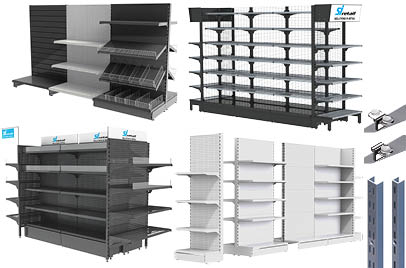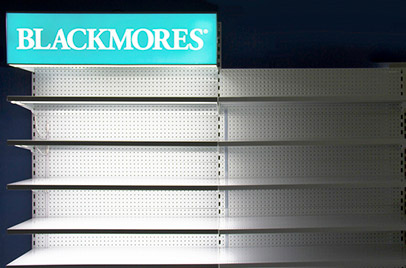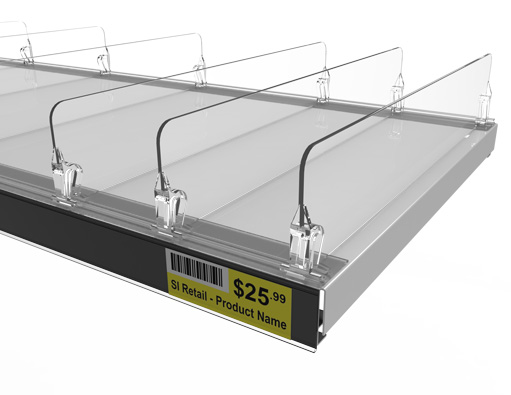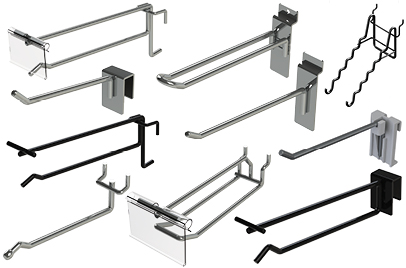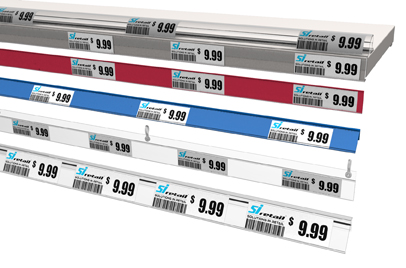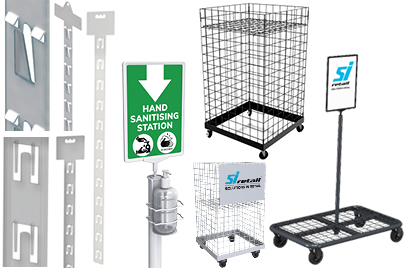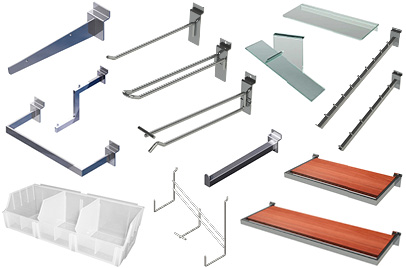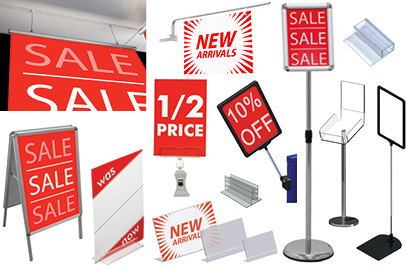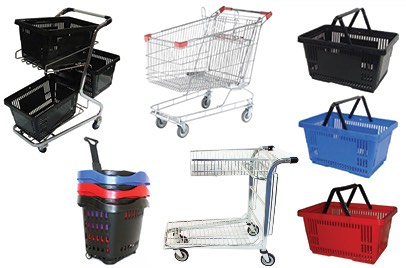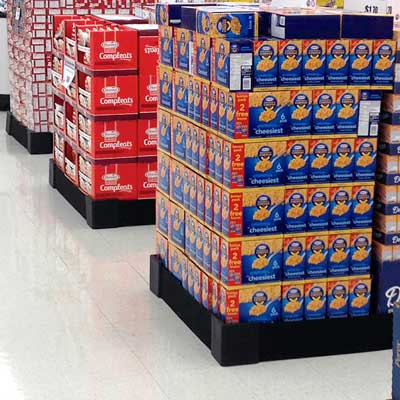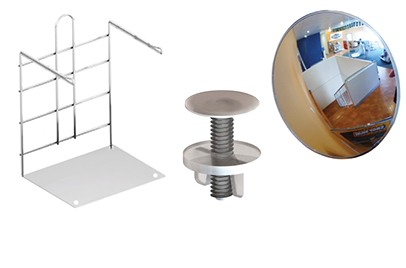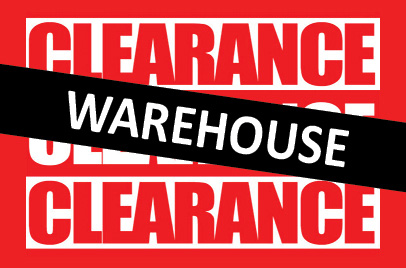How Do Retailers Keep up with New Technologies
Retail Technology by Tim Buckingham
Technology in retail started almost overnight with QR codes. Customers were able to instantly access product specifications, reviews and price comparisons. Then technology such as digital signage and virtual dressing rooms all continued to blur the line between online and in-store shopping. There is also all the technology in the background that helps retailers with inventory and data collection and then technology that helps improve customer services such as CRM and POS. Technology affects different areas of retail. They have different functions, some are complete new products, and others are an improvement of existing systems. Some are cutting edge and expensive while others are becoming more popular and affordable. So how do retailers sort out the useful information from the clutter?
If you want to compete in today's retail world, then you need to keep up with technology. Take the most out of the technology you already have and keep up to date with new ones.
I know you are thinking, "but how can I possibly add one more thing to my to do list?" The truth is, it is quick and easy, if you monitor on a regular basis and it will possibly bring more businesses or at least keep you in the game.
A Retail Technology Strategy
1. Determine your needs by looking at
- Your industry trend and competitors
- The goals you want to achieve
- The technology you already have
2. Assess and understand the technology you are using
Firstly, to be able to understand new technology you need to know the basics, the fundamentals of how the technology works. Start by understanding the tools you already have so that you get the most out of your investment and you create a building block of knowledge to understand future technology.
3. Assess the other resources available to you on a regular basis
Subscribe to magazines, blogs, follow experts in the industry on twitter or join a group on LinkedIn. The beauty of these social medias is that you can start a discussion, ask questions, collect and learn about other people's experiences with a specific technology.
4. Rank the resources in order of usefulness
- Use twitter or RSS feed to group the technology news into categories
- Allow time to learn and use those resources
- Some resources will be a read once and then move on while others are guides that you will come back to for specific info
5. Follow the evolution of a technology
Gartner (world's leading information technology research and advisory company) has developed a graph called the Hype Cycle that helps business owners to plan investments in new technology. The hype Cycle is a graph presenting the maturity, adoption and social application of specific technology. Understanding where a technology actually stands in the hype cycle will help businesses to choose the best time to invest.
Chris Anderson explains during a TED show that technology goes through 4 different stages in their lifetime, Critical Price, Critical Mass, Displacement and Commoditization. He also adds that these stages are usually triggered by external factors such as new complimentary products or changes in legislation...
He takes the example of the DVD; at the beginning this new technology was way above the critical price, too expensive for most people. Around 1997, it fell below $400, which was the psychological price so the DVD started to take off, and in 1998 it rises above the critical mass. The interesting thing is that at the same time, a complimentary technology started to become popular, Home Entertainment Units. The founder of Netflix saw this opportunity and started a company that capitalised on this new trend and that is now worth billions of dollars. Finally, the DVD went through the displacement phase and outsold the VCR and it is now on his way to become nearly free and eventually obsolete. Understanding and following technology trends is essential as timing is everything.
Retail Technology Resources:
I have prepared a list of magazines, blogs and technology leaders that you can follow to access the latest trends in technology:
Magazines:
www.wired.com/Explores current and future trends in technology, and how they are shaping business, entertainment, communications, science, politics and more.
www.rdtmagazine.co.uk/All about retail technology in Europe.
www.retailtechnologyreview.com/Review new technology rising in the retail industry
Twitter might seem useless at first because who cares about what you are doing right now? To me, twitter is the best way to stay on top of trends. All industry experts tweet blog posts they wrote and info they found interesting. Follow industry leaders and group them into lists. List groups similar information and people with similar interests together. Lists help you to sort out the clutter of information going through your twitter feed. By creating lists you organise information in categories and this make it easier for you to read about what you're looking for.
Here is a link to a great info graphic that will teach you everything you need to know about twitter: http://www.edudemic.com/2013/02/a-visual-guide-to-twitter-for-beginners/
Experts in retail technology that you can follow on Twitter
Retail Tech Expo
https://twitter.com/rbtexpo
Retail Prophet
https://twitter.com/RetailProphet/
Deepak Sharma Retail Technology Enthusiast
https://twitter.com/retail_tech
Tim Dickey Retail Technology Professional and Gadget Freak
https://twitter.com/TimDickey
Zander Livingston taking retail RFID to next levels.
https://twitter.com/zanderliving
RSPA The only association dedicated to the retail technology industry
https://twitter.com/InsideRSPA
Retail Design & tech mag
https://twitter.com/RetailDesignMag
SI Retail: News, Tips, Trends about the retail industry
https://twitter.com/siretail
Lists on twitter:
You can also directly access all retail technology news by clicking on the " Retail technology" list. Retail Technology
LinkedIn Group
SI Retail LinkedIn
LinkedIn is the perfect place to listen, ask questions and gain insights in your field. Join groups so that you receive the latest discussions and trends about specific subjects directly in your email box. Here is a pretty good overview of LinkedIn http://www.slideshare.net/JD_Aspire/beginners-guide-to-linkedinpptx
Below are the groups that I find interesting in relation to retail technologies.
New Retail Technology
This covers everything "from new approaches to ePOS, radical payment systems, retail apps for smartphones and tablets to new ways of using and acquiring crucial data, modern approaches to e-commerce and more."
http://www.linkedin.com/groups/New-Retail-Technology-4003824
Retail Technology Association
The Association for Retail Technology Standards (ARTS) is an international organization dedicated to reducing the costs of technology through standards. This LinkedIn group is a great place to start because it links other more specific retail technology groups such as The Store Systems group or The Retail software group.
http://www.linkedin.com/groups/Association-Retail-Technology-Standards-ARTS-1796388/about
Retail Technology & Solutions
This group shares tips, news and reviews about retail technology.
http://www.linkedin.com/groups/Retail-Technology-Solutions-3662330?home=&gid=3662330&trk=anet_ug_hm
Retail Technology Exchange
"This group links together executives from the retail industry with retail service providers to exchange best practices and discuss technical innovations. "
http://www.linkedin.com/groups/Retail-Technology-Exchange-138026/about
Now you are ready to start. Don't overdose yourself with too much information at once. Just slowly set up your accounts, join groups, follow experts and take a few minutes per day to read through your feeds. You want to know about the new technology that comes out, who uses them, how much they costs and how they can be useful to you.
For more Tips and Trends about the retail industry:
Like SI Retail Facebook Page
Follow us on Twitter
Follow us on LinkedIn


